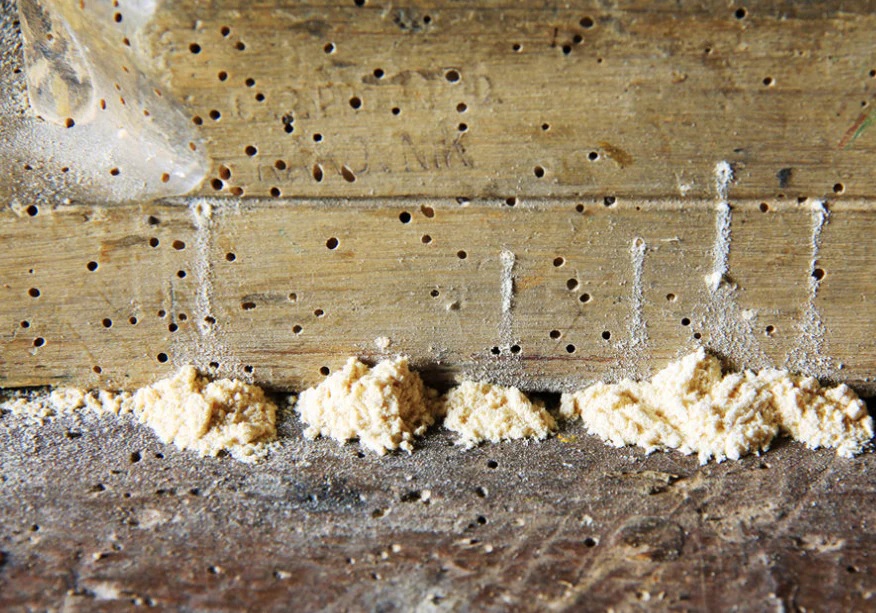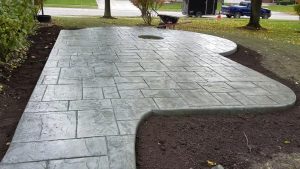If you’ve ever marveled at the intricate patterns and designs found in wooden furniture or structures, you might not know that some of the creators behind these masterpieces are tiny insects known as woodboring beetles. These unassuming creatures have a fascinating role in ecosystems and human activities, and in this article, we’ll explore their biology, behavior, impact, and management strategies.
Woodboring beetles, a diverse group of insects belonging to various families, play an essential role in ecosystems by contributing to the decomposition of dead wood. However, when their activities intersect with human interests, such as timber production and structural integrity, their impact takes on a different significance.
Life Cycle of Woodboring Beetles
The life cycle of woodboring beetles consists of distinct stages: egg, larva, pupa, and adult. This cycle can span from months to several years, depending on factors like species, environmental conditions, and the type of wood they inhabit.
Types of Woodboring Beetles
Woodboring beetles are categorized into several families, each with unique characteristics and habits.
Anobiidae Family
These beetles, commonly referred to as “deathwatch beetles,” prefer damp and decaying wood. Their distinctive tapping sounds, resembling a ticking clock, have led to eerie legends and associations with death.
Cerambycidae Family
Known as “longhorn beetles,” this family showcases long antennae and a wide range of sizes and colors. Some species are prized for their vibrant appearance, while others are considered pests due to their destructive habits.
Buprestidae Family
The “jewel beetles” are renowned for their dazzling iridescent colors. While they contribute to pollination, certain species can also pose threats to trees and wooden structures.
Biology and Behavior
Woodboring beetles exhibit intriguing behavior and unique feeding patterns.
Larval Feeding Patterns
Woodboring beetle larvae possess specialized mouthparts for consuming wood. Their meandering tunnels can weaken the wood’s structural integrity, making it prone to breakage or collapse.
Reproduction and Egg-Laying
Female woodboring beetles lay eggs in crevices within wood. As larvae hatch, they feed on the surrounding material, creating intricate galleries that wind through the wood.
Signs of Infestation
Detecting woodboring beetle infestations early is crucial to minimize damage. Sawdust-like frass, exit holes, and weakened wood are telltale signs of an infestation.
Structural Damage and Economic Impact
The economic impact of woodboring beetles is substantial, affecting both industries and individual property owners.
Impact on Timber Industry
Infestations can lead to decreased timber quality, rendering wood less suitable for construction and manufacturing.
Impact on Homes and Structures
In homes and historical structures, woodboring beetles can compromise the structural integrity, necessitating costly repairs and preservation efforts.
Prevention and Control
Various strategies exist to manage woodboring beetle populations and prevent their damage.
Natural Predators and Biological Control
Certain insects and fungi act as natural predators, helping to keep woodboring beetle populations in check.
Chemical Treatments
Insecticides can be used to combat infestations, but careful consideration of their environmental impact is essential.
Preventative Measures
Proper wood storage, seasoning, and sealing can significantly reduce the risk of infestation.
Protecting Wooden Artifacts
Museums and collectors must employ specialized methods to safeguard wooden artifacts from woodboring beetle damage.
Woodboring beetles may be diminutive, but their impact on ecosystems and human activities is significant. Understanding their behavior, lifecycle, and management strategies is crucial for balancing their role in nature with our needs for wooden resources and structures.
Are woodboring beetles harmful to humans?
Woodboring beetles themselves do not pose a direct threat to humans. They neither bite nor carry diseases that can harm us. However, the damage they inflict on wooden structures can indirectly affect human safety. When woodboring beetles burrow into wooden beams, furniture, or other wooden elements, they weaken the structural integrity of these items. Over time, this weakening can lead to unexpected collapses or failures, potentially causing harm to people in the vicinity. It’s important to address woodboring beetle infestations to ensure the safety of structures and objects made of wood.
Can woodboring beetles be eliminated entirely?
Complete eradication of woodboring beetles is challenging due to their natural presence in ecosystems. These beetles have coexisted with trees and wood for millions of years, playing essential roles in nutrient recycling and ecosystem dynamics. However, effective management strategies can help control their populations and minimize their impact. Regular inspections, early detection, and prompt action are key. Implementing measures such as proper storage, wood treatment, and maintaining low moisture levels can significantly reduce infestations and their damage.
Do all woodboring beetles cause damage?
No, not all woodboring beetles cause damage. While some species are destructive and can weaken wooden structures, others play a beneficial role in ecosystems. Certain woodboring beetles aid in breaking down dead wood, which contributes to nutrient cycling and ecosystem balance. These beetles assist in the natural process of decay and decomposition, helping to recycle nutrients back into the environment. However, it’s important to identify and manage species that are known to cause damage when they come into contact with human-made wooden structures.
What role do woodboring beetles play in ecosystems?
Woodboring beetles play a vital role in ecosystems as nature’s decomposers. They are essential in breaking down dead and decaying wood, helping to recycle nutrients back into the soil. By creating tunnels and galleries within wood, they facilitate the penetration of microorganisms that further aid in decomposition. This process not only recycles nutrients but also supports the growth of new vegetation. Additionally, woodboring beetles serve as a food source for various predators, contributing to the intricate balance of food chains within ecosystems. Overall, these beetles contribute to maintaining healthy forests and natural environments.










